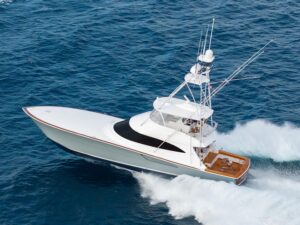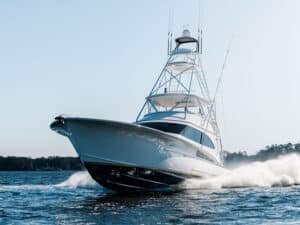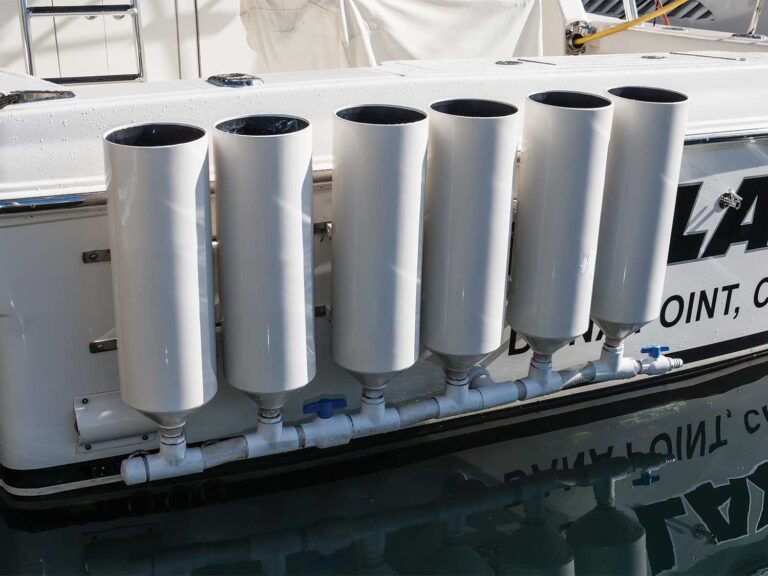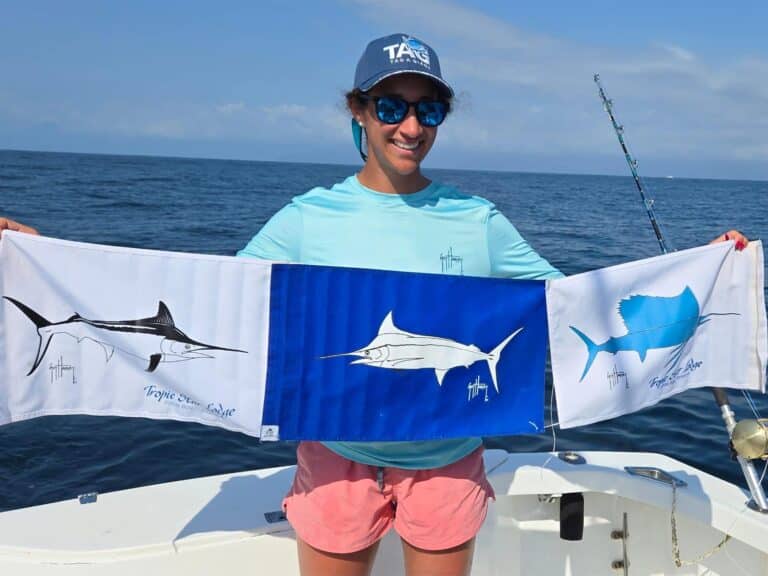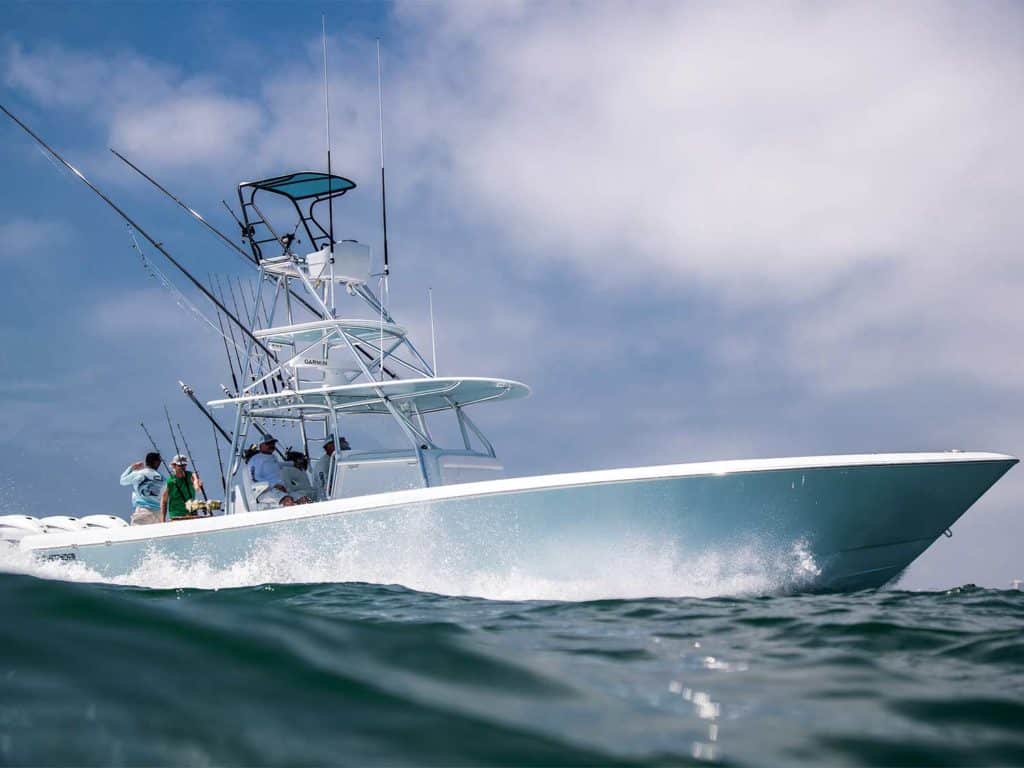
Contender Boats founder and president Joe Neber started building boats in 1984 with the singular focus to build the toughest, most competitive semicustom center-consoles on the market. His vessels set the bar in terms of performance, livewell capacity, durability and more, each carefully engineered and handcrafted in South Florida for delivery around the world. Building on that early reputation, Contender evolved to the current model lineup, which includes a 25-foot bay boat and marches upward through both conventional and stepped-hull designs in 10 different models all the way to the 44-foot ST flagship. With numerous C1 boats having fished under the Team Contender banner in South Florida, this particular build would be different. It would be designed and crafted to take on an entirely new challenge for the brand: tournament fishing for billfish and tuna in the mid-Atlantic and Northeast.
Watch: Check out Wall Hanger, the 63-foot waterjet-powered Spencer Yacht, in this video review.
With a 12-foot beam and ready-to-fish weight of 22,300 pounds, the 44ST is a beefy bluewater brawler. Knowing that the team would need to run as much as 120 miles or more one way, the Contender design team included the optional fuel capacity of 700 gallons. The boat is powered by triple Yamaha XTO 425 hp outboards—a popular option given their benefits of power, reliability and excellent maneuverability, especially in reverse (at speeds below 2,500 rpm, the engine’s exhaust is diverted away from the prop for a better bite in reverse). Engine performance displays, along with joystick control, are located in the dash just below the two Garmin 24-inch multifunction displays, with a full suite of additional electronics residing in the gap tower.
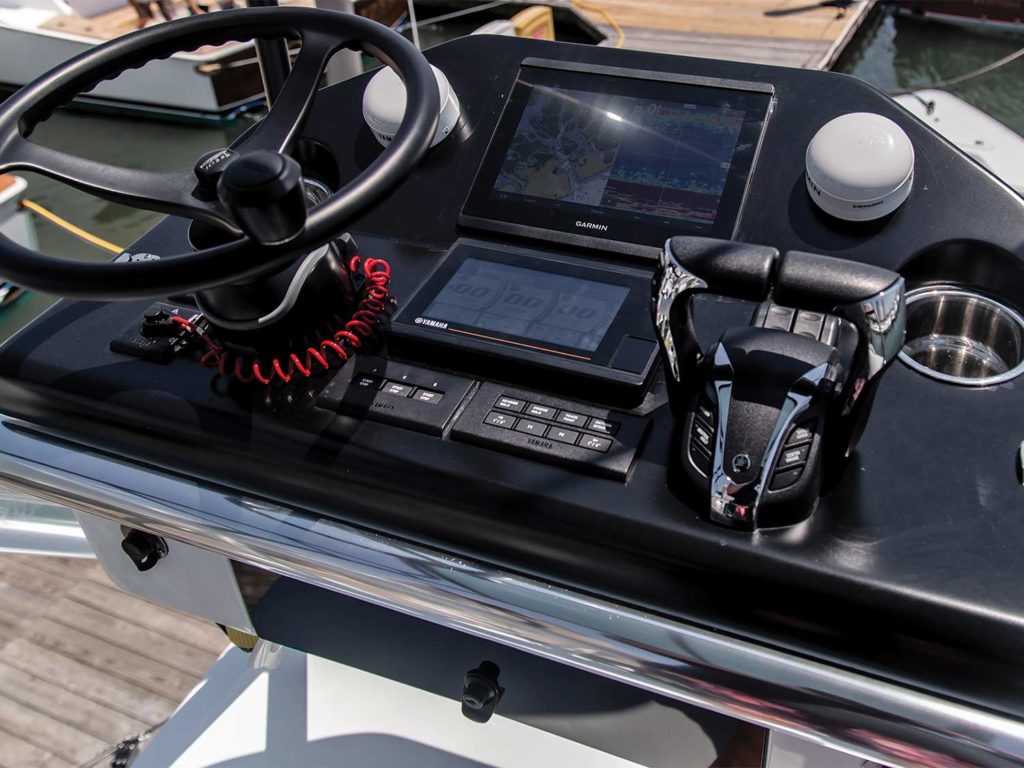
One key to the mid-Atlantic fishery is having the ability to dredge-fish, which has often been a weak spot in the center-console game. No more: C1 is ready to fish a big-boat dredge spread thanks to the Gemlux carbon-fiber dredge booms. Using heavy-duty zero-degree swivel rod holders in the gunwales abeam of the console, the 8-foot booms—complete with Lindgren-Pitman electric reels—allow the team to easily fish those big, triple-tier natural-mullet dredges with no problems. The booms even retract for easy storage at the end of the day. Gemlux also supplied the boat’s 22-foot carbon-fiber outriggers, which are internally rigged with a triple-halyard setup.
The console seating module is nothing short of a work of art, with three aft-facing seats with armrests being the preferred spot to monitor the spread or relax during those long runs offshore. Below the seats is an oversize, insulated bait-storage cooler with ice chipper that rivals any found on an inboard boat; behind the backrest, which uses hidden magnetic fasteners, is a large tackle-storage area that complements the tackle storage found on either side of the module. The portside access also hides a 70-gallon retractable freshwater washdown. Uber-comfy Llebroc electric seats are in a three-across configuration, with the helm centrally positioned.
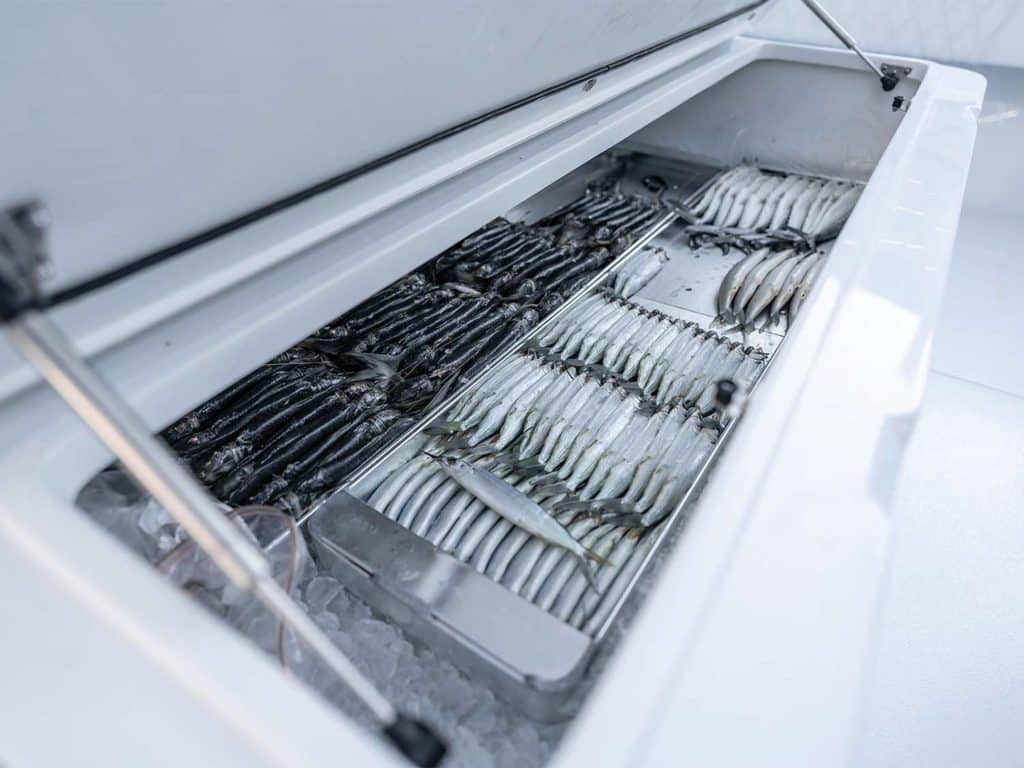
Within easy reach of the aft seating is a custom Bluewater rocket launcher, complete with built-in pitch-bait tubes. Another custom feature: This model eliminates the starboard-side transom door for a third livewell—the center box is now an insulated drink cooler, with flanking 55-gallon wells.
Another departure from the standard layout is in the console. A Seakeeper gyro resides beneath the electronics access panel, and while the head and sink remain, the forward section belowdecks has been transformed into a massive storage area. Rod racks line each side of the space, with LED lighting above and SeaDek padding throughout: the perfect spot to stow the aforementioned Gemlux dredge booms and LP reels, plus a full complement of trolling rods and other gear that needs to be kept off the deck and locked up each evening. It’s a slick setup.
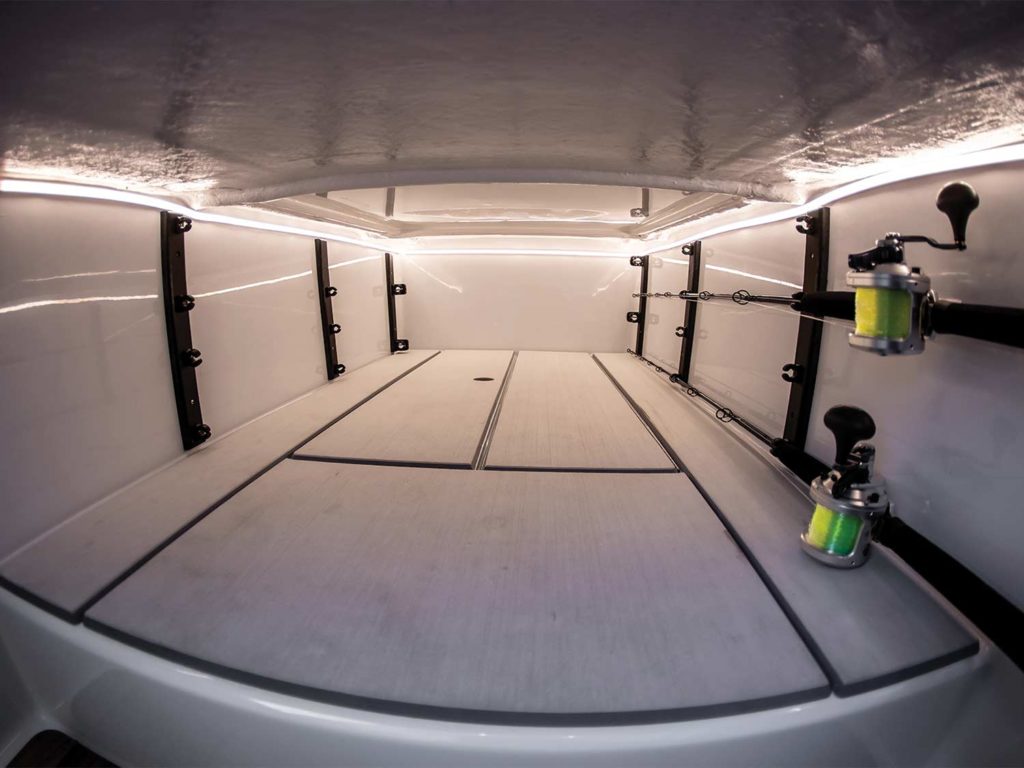
Moving forward, the coffin box/lounge has three compartments with separate hinged lids—one on each side for personal gear and one forward section that the team uses for cold storage.
Read Next: Find out if your next boat is insurable before you sign on the dotted line.
In the tower, the C1 team opted for a pair of Daiwa electric reels mounted on short bent-butt rods to control the bridge teasers, which are within easy reach of the captain as he faces aft watching the baits. The Z-top pipes are blacked out above the bellyband to reduce glare, another nice touch.
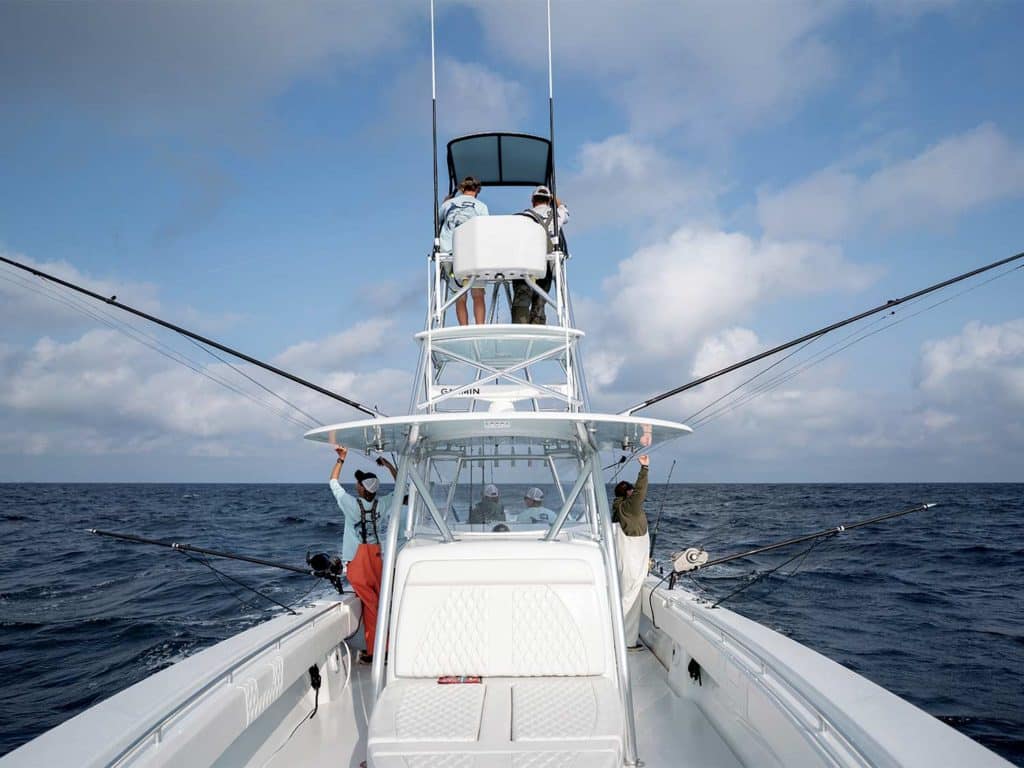
It’s clear the Contender team really took the time to understand the requirements of the mid-Atlantic fishery, then addressed each issue while designing C1, from the need to run long distances and troll heavy dredges to having plenty of rigged-bait storage and the ability to store all of that expensive tackle and gear safely below deck at the end of the day. Combine that with the brand’s DNA of performance—and the ability to run to the fishing grounds quickly and comfortably—and in the right hands, C1 should be very dangerous in this fishery.
This article originally appeared in the December 2021 print issue of Marlin.
